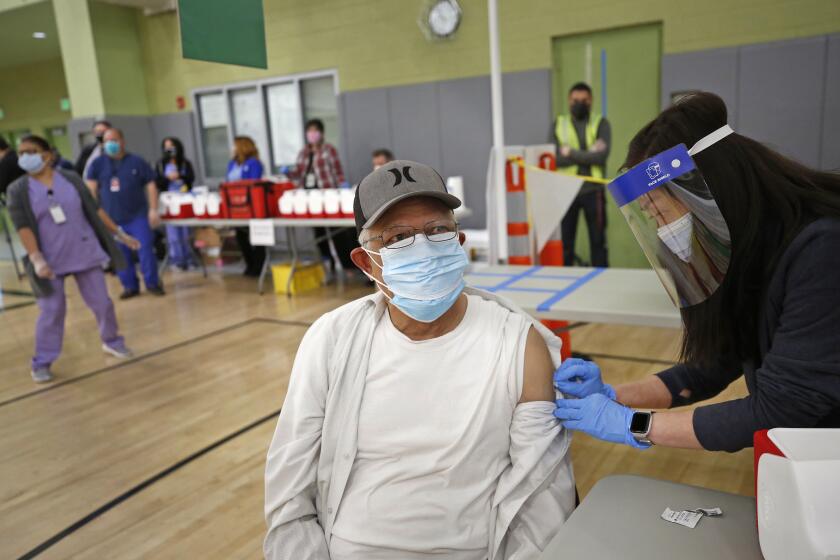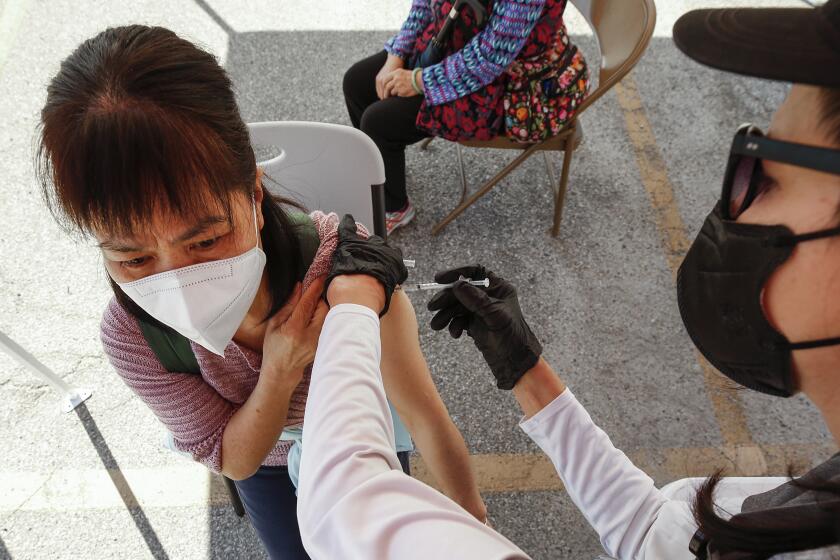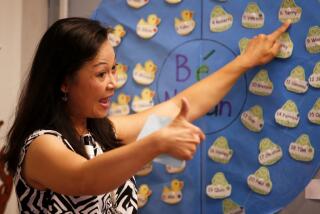How can we support teachers and their mental health amid COVID-19?
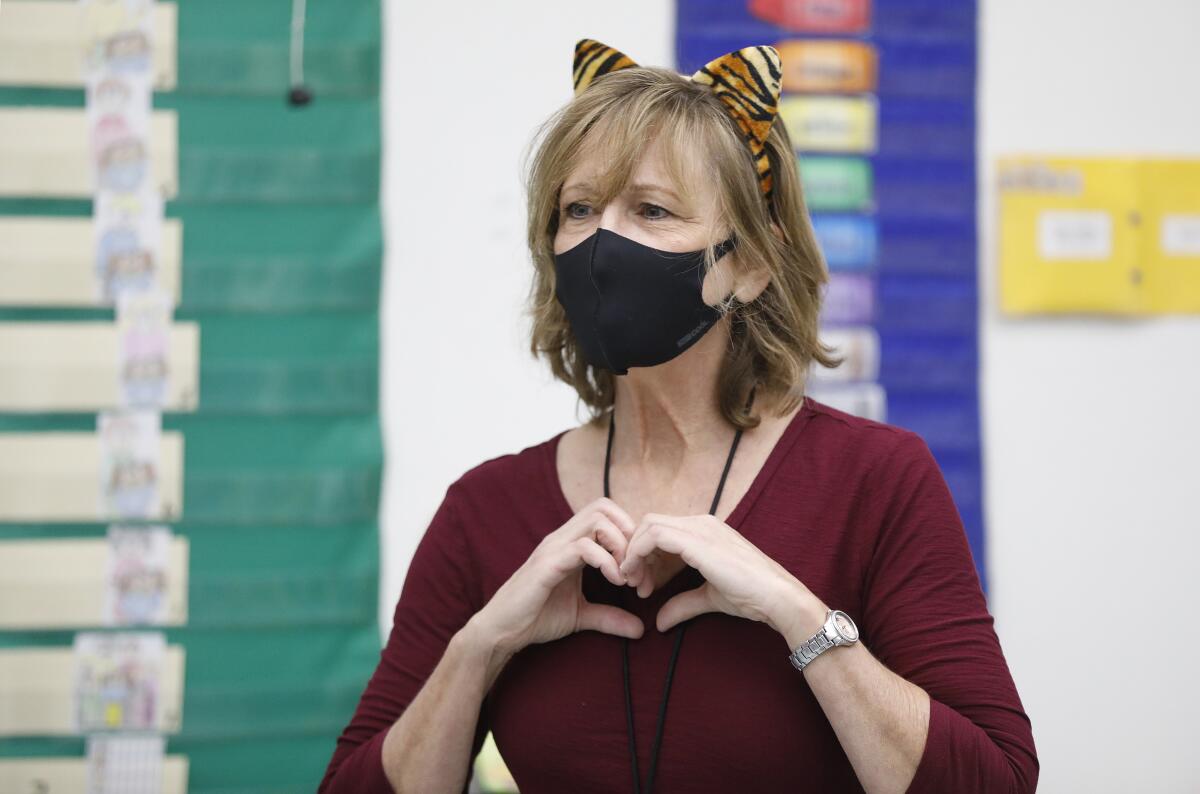
Teachers have recently been at the center of one of the more volatile debates of the pandemic — when to reopen in-person schooling.
The last year has been a wake-up call for parents of school-age children. By now, we fully understand what life is like without in-person school — and the teachers, day-care workers, after-school instructors, bus drivers, custodians and other essential staffers who keep schools running. Workforces depend on their parent employees having a place to send their kids while they are working, and last year, researchers estimated nearly 10% of economic activity won’t return until schools and day cares open.
But these reopening conversations often focus on the needs of the students and parents, with less consideration for the needs of the educators.
A study surveying 73 teachers working in under-resourced schools in Southern California during the pandemic described how work-life balance has been affecting teachers’ well-being and how some have been experiencing symptoms of secondary trauma.
Eric Gurna, the president and chief executive of LA’s Best, an after-school program, said it’s important for his staff to understand that they need to put their oxygen masks on first before assisting others.
Here are some tips from local educators and therapists for how we can all help our teachers as more schools reopen.
The coronavirus pandemic, wintertime, the daily stressors of life — it all can take a toll on our mental health. Here are some resources to help you understand therapy, how to find a therapist and more.
Understand that teaching in a pandemic is hard
Reach Out‘s Inland Health Professions Coalition recently held a series of online wellness workshops for teachers. Program manager Alyse Michaelis said she wanted to create a space where educators could gather, relax and talk about some of the things they’re experiencing.
For the last year, educators have transformed their lesson plans for online teaching. Some were using video conferencing technology they’d never used before; others had their own children to take care of at home.
Teachers have seen their students struggle academically with only a limited amount of time to provide individualized attention. They have also seen students struggling socially and emotionally, without the ability to put their hands on their shoulders for support or pull them aside during recess to check on them.
And when it comes to how and when to safely reopen, many teachers feel as though they have had limited control or involvement in the decision. Some worry about jeopardizing their own health and the health of their families.
“It’s an impossible situation,” said Jeannette Sandoval, a psychotherapist and the founder of Wellducation.
Through Wellducation’s pilot program, which launched last year, she worked with students, staffers and school leaders at three Los Angeles schools to make mental health a priority in education.
She explained that there are many efforts to make schools safe spaces for students, environments where they can ask for help if they don’t understand or if they’re struggling.
School leadership needs to do the same for teachers, she said.
“A lot of teachers feel like they cannot share how they are really feeling because they think they are going to lose their jobs,” Sandoval said. “We need to normalize the stress and anxiety and not be shamed for it. Otherwise it’s going to affect staff retention, and we’re going to lose teachers.”
Guidelines released Thursday show California’s new program earmarking 10% of COVID-19 vaccines will be reserved for K-12 school employees and those who work in child care positions.
Increase support that leads to educator motivation
At Reach Out’s teacher wellness event, Lorena Salud Gadella Kamstra, a lecturer at the University of Essex in Britain, shared her research about what leads to motivation and demotivation in teachers.
She said that often, the focus is so much on student motivation that teachers overlook their own needs.
Common reasons for educator demotivation include an unreasonable workload, crowded classes, low wages, lack of job security, and insufficient support or resources.
“After the pandemic, new demotivating factors have emerged, and the former ones have worsened, meaning that teachers are in a very tough situation right now,” Gadella Kamstra said.
New struggles include a lack of engagement and interest from students, fatigue, and more rules about what you can and cannot do.
When teachers feel overwhelmed, Gadella Kamstra recommends setting aside time to reflect on teaching moments that have gone well, to remember the reasons you started teaching in the first place and to connect with co-workers.
“A lot of the teachers miss human connections,” said Armando Diaz, the foundation director of programs and partnerships at EduCare Foundation, which works with students, educators and parents to create healthy learning environments. “Before, you could go into the hallway to talk to a colleague next door. Now when there’s meetings, it’s usually to go over content and schedules.”
School leaders can help support their teachers by providing more communication, recognition, training and opportunities for development, according to Gadella Kamstra’s research.
“We want to give teachers the sense that they’re not in this by themselves,” said Joel Cisneros, the director of the Los Angeles Unified School District’s School Mental Health, “that there’s a whole community behind them.”
Cisneros said it’s important to express gratitude to teachers.
“They’re working really hard,” he said, “and making them feel appreciated and acknowledged can go a long way.”
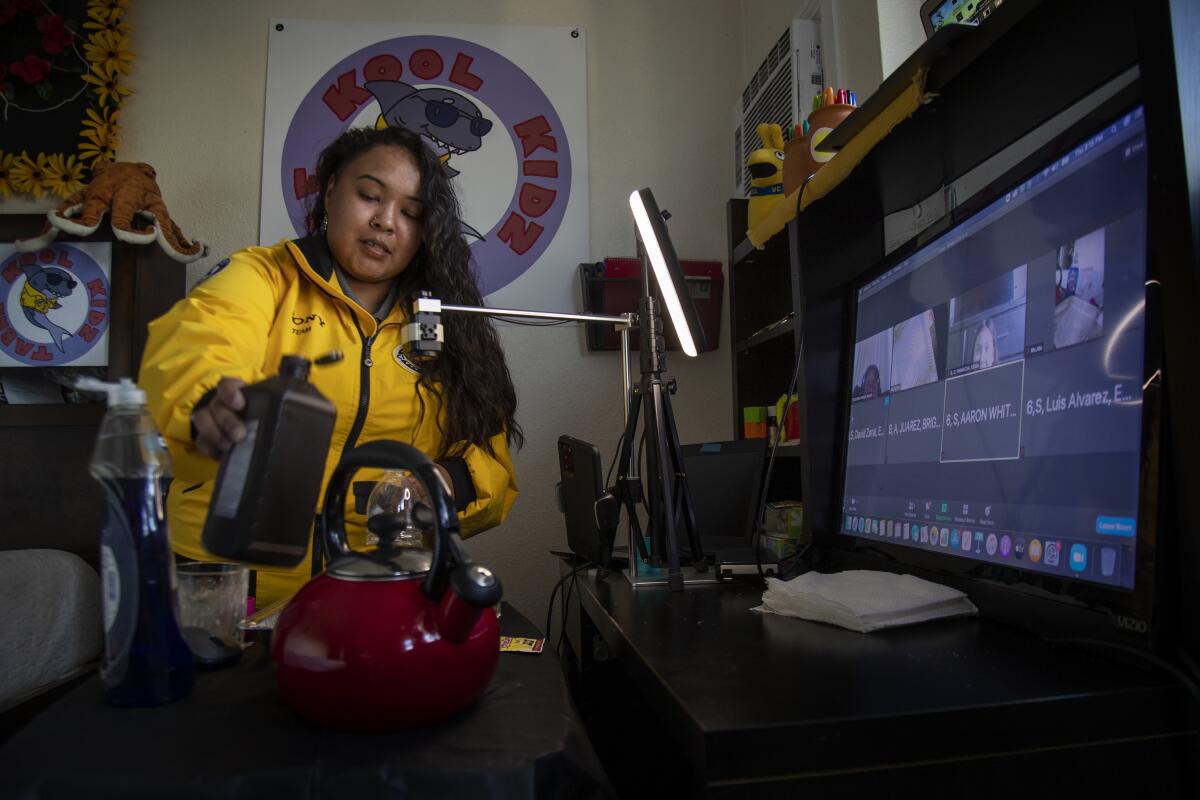
Give teachers the basic tools of wellness
LAUSD teachers have a resource of daily action items, called Resilience Daily, to use in their classroom. The themes are: Mindful Monday, Grati-Tuesday, Wellness Wednesday, Thoughtful Thursday and Fun Friday.
Sandoval, through Wellducation, has also developed a curriculum of bite-sized wellness videos for teachers to easily integrate into their curriculum. These videos, often featuring kids speaking about their own experiences, teach students about self-esteem and self-regulation. They also serve as reminders for the teachers to prioritize their own well-being.
It’s important to take a preventive approach, said Stu Semigran, president and co-founder of EduCare.
“Over Zoom, you see people’s faces up close,” he said of the training EduCare provides for educators. “We’re encouraging them to have conversations that they wouldn’t have had.”
Learn from therapists
Through distance learning, teachers have been able to see more into their students’ world than they have before, said Omar Gonzalez-Valentino, the director of behavioral health at TruEvolution who spoke at a Reach Out’s seminar about healthy ways to cope.
Some students are now tasked with taking care of their younger siblings while their parents work; others have had to pick up jobs to help pay the rent.
“The pandemic stripped away the illusion that we could simply focus on schoolwork and the task at hand,” said Gurna, who during COVID has pivoted LA’s Best staffers to distributing food, running testing sites and assisting children of essential workers.
“It’s heavy witnessing people’s problems,” said Gonzalez-Valentino, who worked as a substitute special education teacher before he pursued his career in psychology. “Compassion fatigue and burnout is real, and you have to learn how to compartmentalize without being callous and cold. You need to learn how to turn it off and turn it on, and that balance is a fine art.”
He encouraged teachers to think about how you know when you’re getting to your breaking point. Are there any physical signs or triggers?
LAUSD has a number of resource pages on its website, including psychological first aid to help Black staffers deal with racial trauma.
Cisneros also points to the district’s hotline — at (213) 241-3840 — that teachers can not only call if they need support for themselves, but also if they need consultations from social workers and other experts to best address a student’s issues.
“People have lost colleagues and family members,” Diaz said. “These are things that they haven’t shared with anyone. They still have scars, and we need to give them the confidence to open up. We need to work on building relationships.”
Prioritize mental health in reopening plans
Sandoval explained that when a student is hospitalized because of mental health challenges, a reentry plan is always created to allow the student to ease back into schoolwork.
“There should be a reentry plan for all of us,” Sandoval said. “We talk a lot about hand sanitizer and social distancing. We talk a lot about the data and infection rates. But there’s going to be social fatigue. We have to build back our trust in the system and our resilience.”
Gurna thinks that as Los Angeles educators and staff return to the classroom, mental health should be a priority.
“Learning loss is a matter of expectations from the school and the state, and these can be adjusted because of a global pandemic and should continue to be adjusted for years to come,” he said. “Academics, we can catch up, but we have to address this natural reaction to social isolation, with the understanding that it’s not anyone’s fault.”
The L.A. school district will get the COVID-19 vaccines by the end of the week, with a target of mid-April to reopen some campuses.
Readjust expectations
Gadella Kamstra, who teaches in England, was in the middle of a third wave of outbreaks and shutdowns when she spoke to teachers at the Reach Out panel.
Some things she advises for teachers to mentally prepare for before returning to in-person teaching:
- The challenge of taking care of students’ hygiene and enforcing masking rules.
- The inability to get physically closer to students.
- The inability to correct student’s papers, if worksheets are being avoided to reduce the spread of the virus.
- The difficulty of group work because of social distancing.
- The limited space in the classroom to arrange tables.
- The difficulty practicing speaking skills or pronunciation in language classes due to masks.
- Teaching in-person students and remote students at the same time.
- The possibility that the class will have to go back to remote teaching at any time.
- The possibility that teachers might not feel safe and will need to express their concerns to their school leaders.
This will be a tricky transition, Gadella Kamstra said. She encouraged teachers to be realistic about their planning to avoid burdening themselves with unrealistic expectations.
It’s been a rough year, and maybe you are considering therapy for the first, second or fifth time. It takes patience and effort to find the right therapist. Here’s a breakdown of what you need to know.
More to Read
Sign up for Essential California
The most important California stories and recommendations in your inbox every morning.
You may occasionally receive promotional content from the Los Angeles Times.

